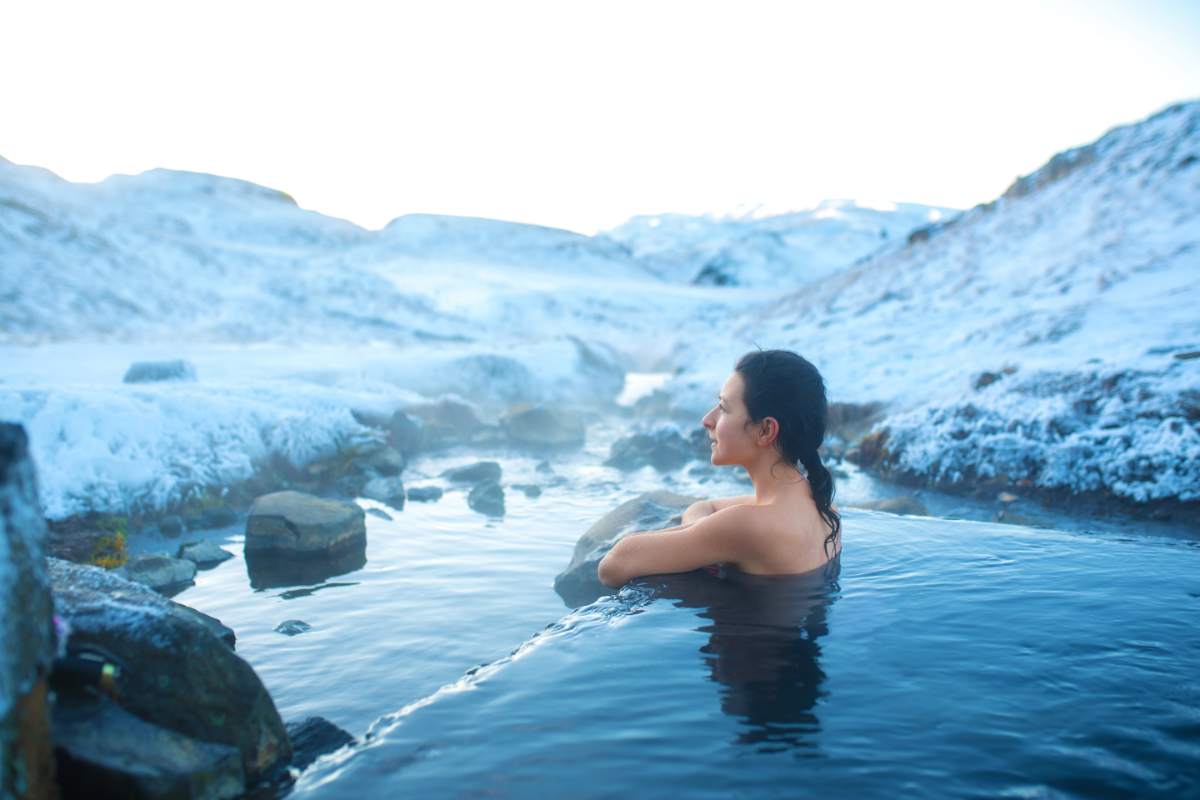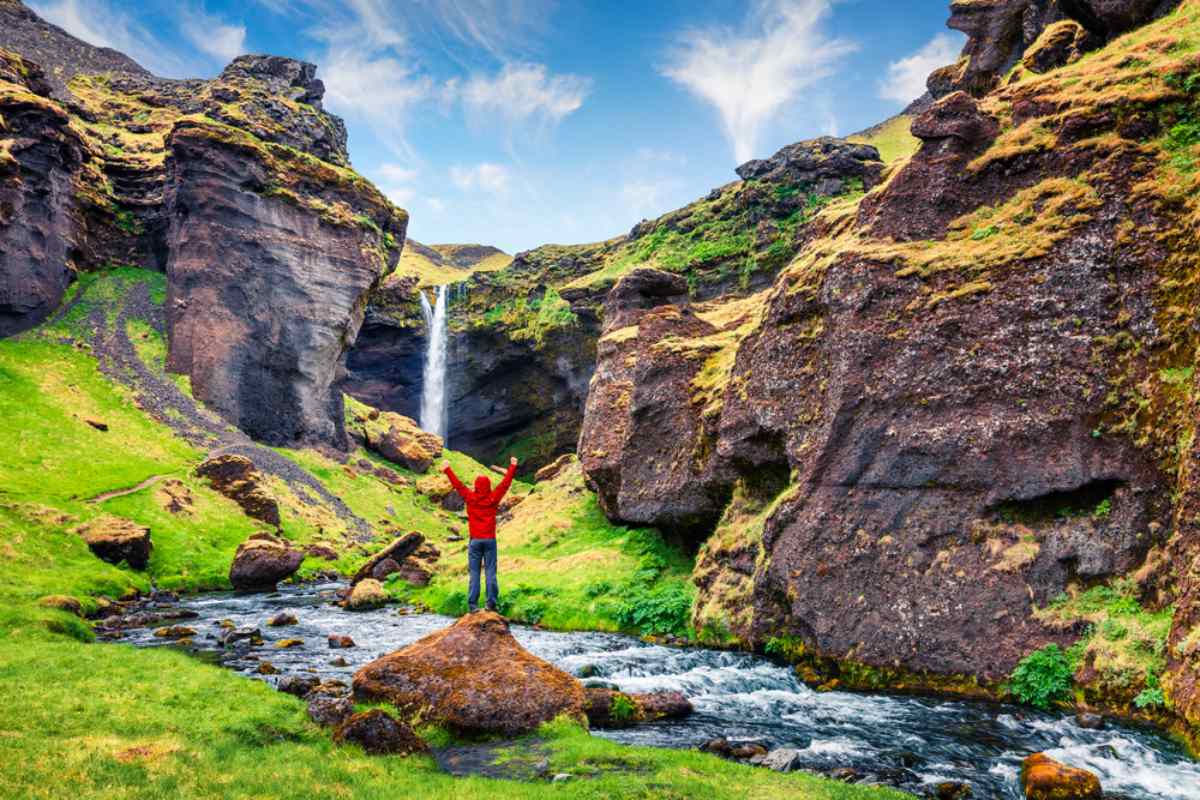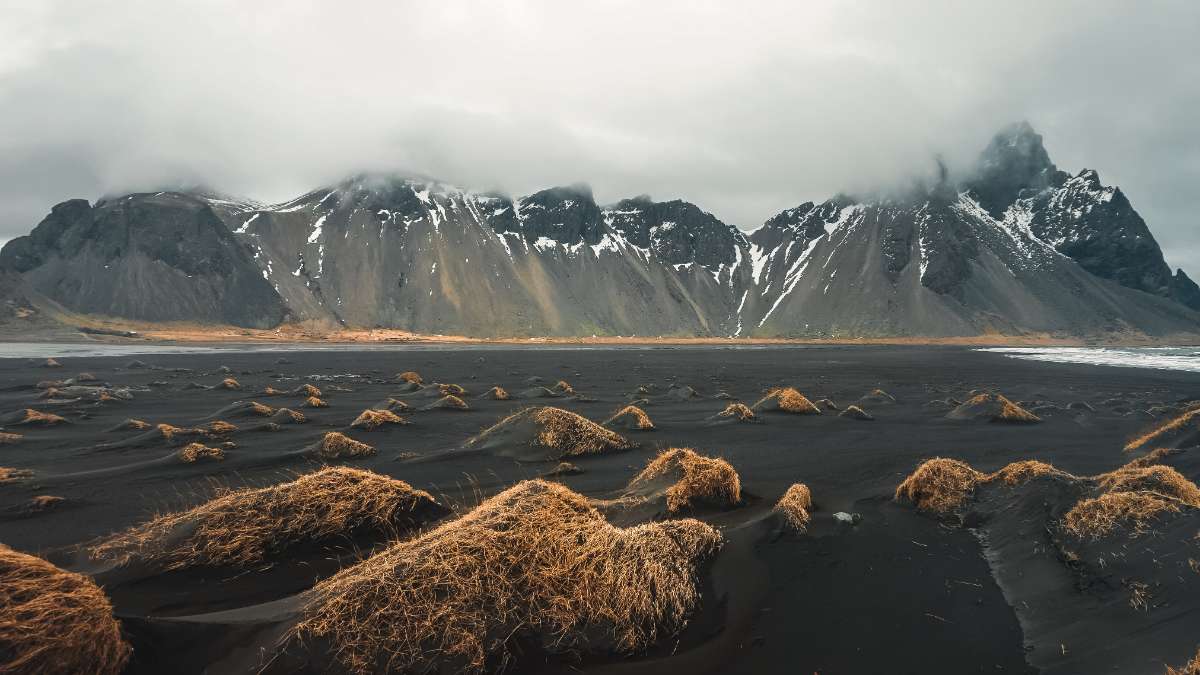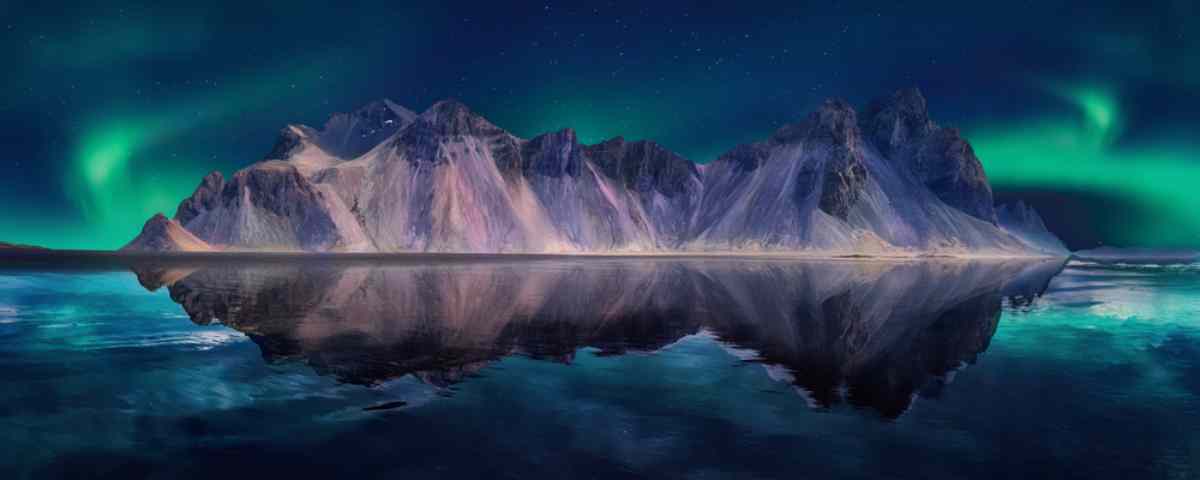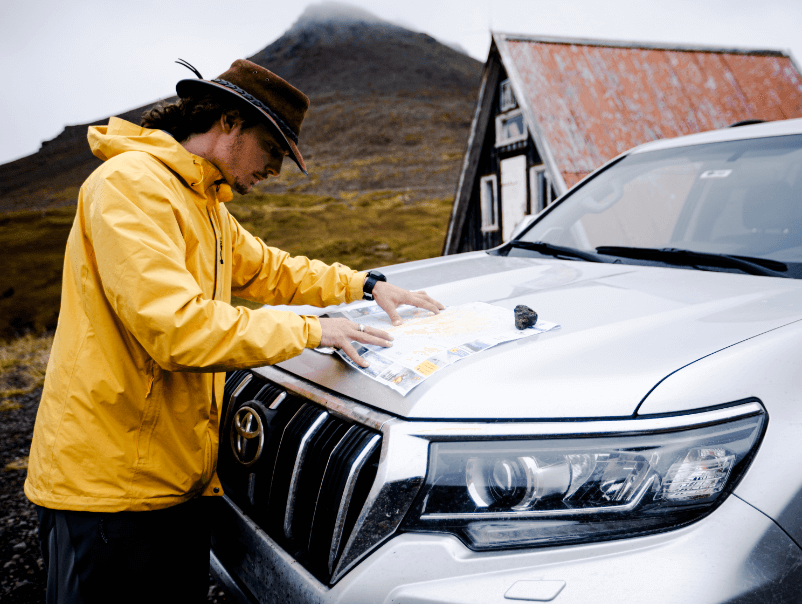Whether you’ve seen it in real life or online, the Iceland Northern Lights are always worth visiting The Land of Fire and Ice. As expected, this magic phenomenon has a rich history and an incredible scientific explanation that might leave you with an appetite for astronomy.
But catching the Northern Lights is easier said than done and should be approached with an open mind and patience. In this article, we go through everything there is to know about the Iceland Northern Lights, so stay tuned and enjoy!
What are the Northern Lights?
If you have been fortunate enough to see the northern lights in Iceland (or anywhere else), you’ve probably wondered what on Earth could possibly create something like that. Before you turn the key and head out on your campervan northern lights trip, get the background down pat to really appreciate what you’re about to see.
Northern Lights Legends
Way back in the day, people would look up at an amazing display of light in the sky and dream, imagine, and discuss what these dancing flames were and how they got there. Most people accepted this as some otherworldly interaction with the human world that didn’t seem to have a negative impact on us. Others didn’t.
There are a couple of well-known legends about the Northern Lights that have lived on in different cultures close to the North Pole.
The Finns told a legend about how foxes ran across the skies so quickly that their tails would create sparks as they struck the mountains. The Swedes saw the Northern Lights as a good omen that would bring plenty of fish on their next trip.
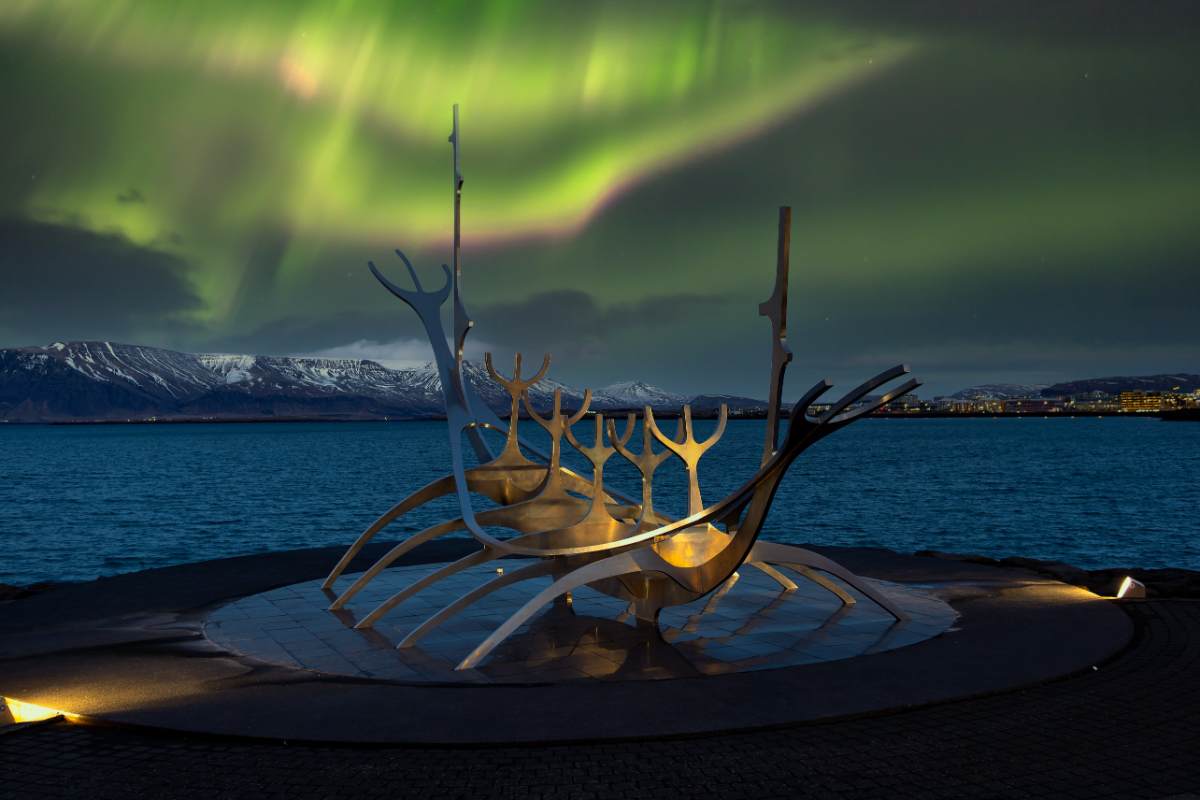
The Sámi, living in the northern part of Sweden, Norway, and Finland, saw the Northern Lights as the souls of the dead. If you would antagonize or interact with the Northern Lights in any way, you might get lifted up into the skies and carried away.
The Vikings saw the Northern Lights as the bridge from Asgard (the gods’ home) to Manheim/Midgard (Man’s home). This was guarded by Heimdal and used by the Valkyries as well as the Asa gods.
The Cultural Significance of the Northern Lights in Iceland
Except for all sorts of myths and legends, the Northern Lights have always been interwoven with the Icelandic culture. Spotting the Northern Lights has always been perceived as a good omen or a sign of good luck.
For women, the Northern Lights promised to bring some much-needed relief during childbirth. It was believed that if the Northern Lights appeared, it would take away some of the labor pains. But, this relief was conditional since they weren’t allowed to look at the lights, otherwise their child would be born cross-eyed.
Northern Lights and Science
According to what scientists throughout the ages found, the Iceland Northern Lights is an interaction between the energy shot out by the sun and the Earth’s magnetic field. So, in a way, the people from hundreds of years ago were not wrong in the sense that the Aurora Borealis in Iceland is an interaction between worlds. It’s just between the sun and Earth rather than spirits and mankind.
The scientific explanation is that sometimes, the sun shoots out an extra powerful wave of energy that hits the Earth’s magnetic field. Most of the energy bounces back into space, but some will get trapped in the magnetic field and interact with the gases in the atmosphere. When the gases get energized, they shoot out some energy, which comes out in the form of light and becomes the Northern Lights.
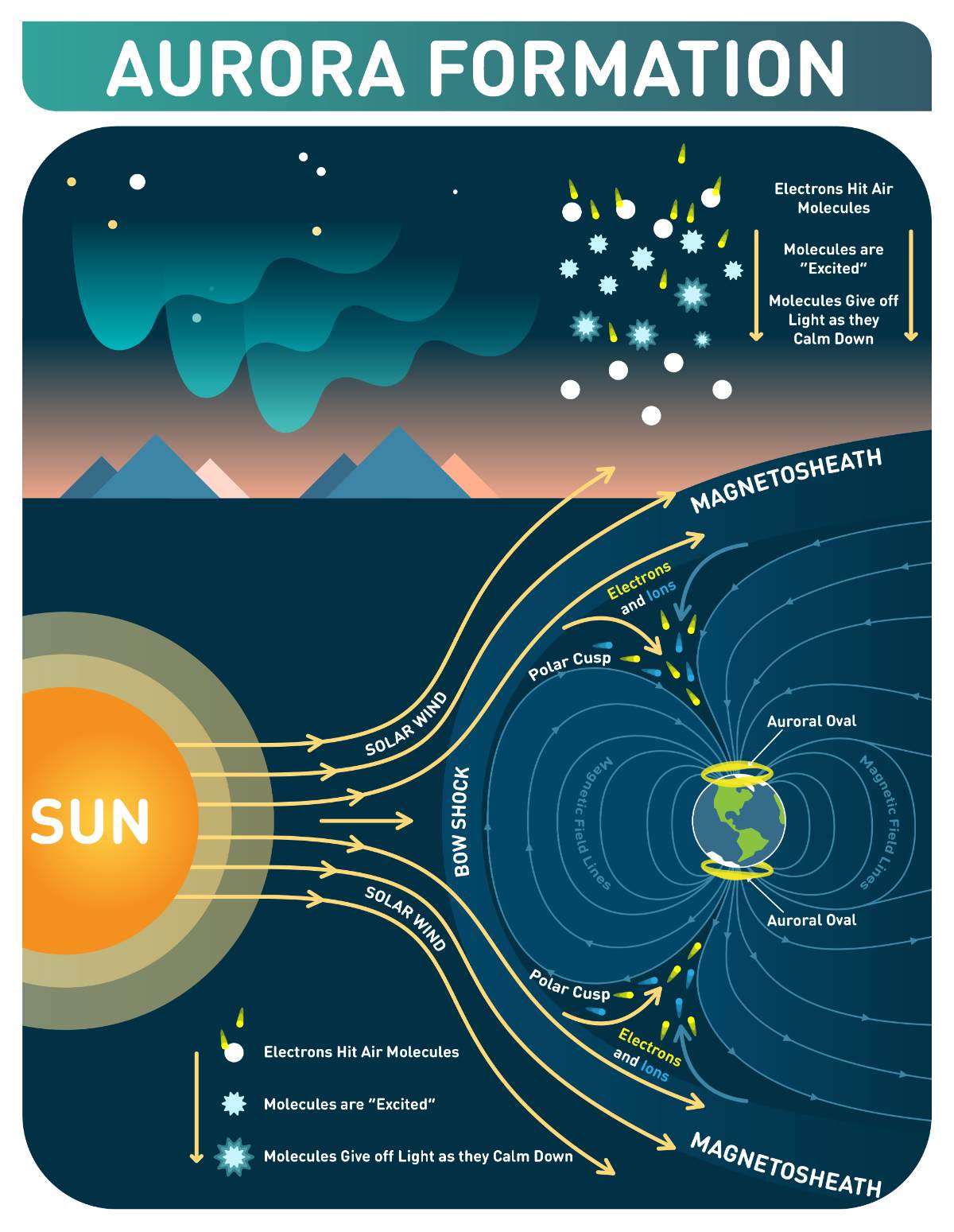
Some might think that this is cause for concern. After all, the sun shoots massive amounts of energy at us, and we’re just looking at the pretty display?! Luckily for all of us, this is completely harmless and is not something anyone needs to worry about. Our atmosphere is just as good at protecting us from harm as it is at displaying the stunning Aurora Lights in Iceland.
Are There Any Southern Lights?
Yes, absolutely. Even if we are a bit biased and feel like nothing quite measures up to the Iceland Northern Lights, the same phenomenon happens on the other side of the world. It looks the same and comes from the same cosmic events, but since people haven’t habited the South Pole, the Aurora Australis is less spoken of.
Where Can the Iceland Northern Lights Be Seen?
This might surprise to some people, but the Aurora Borealis in Iceland isn’t exclusive to Iceland. In the entire Northern Hemisphere, above a certain latitude, the Northern Lights will be visible under the right circumstances.
If you go below the 60° latitude line, you’ll be out of luck if you want to spot the Iceland Auroras. In the same way, if you go below the 60° latitude line to the south, you’ll be able to catch the Southern Lights.
This is the case because the magnetic fields around the Earth converge at the north and south poles, making it easier for energy from the sun to enter and stay in the magnetic fields.
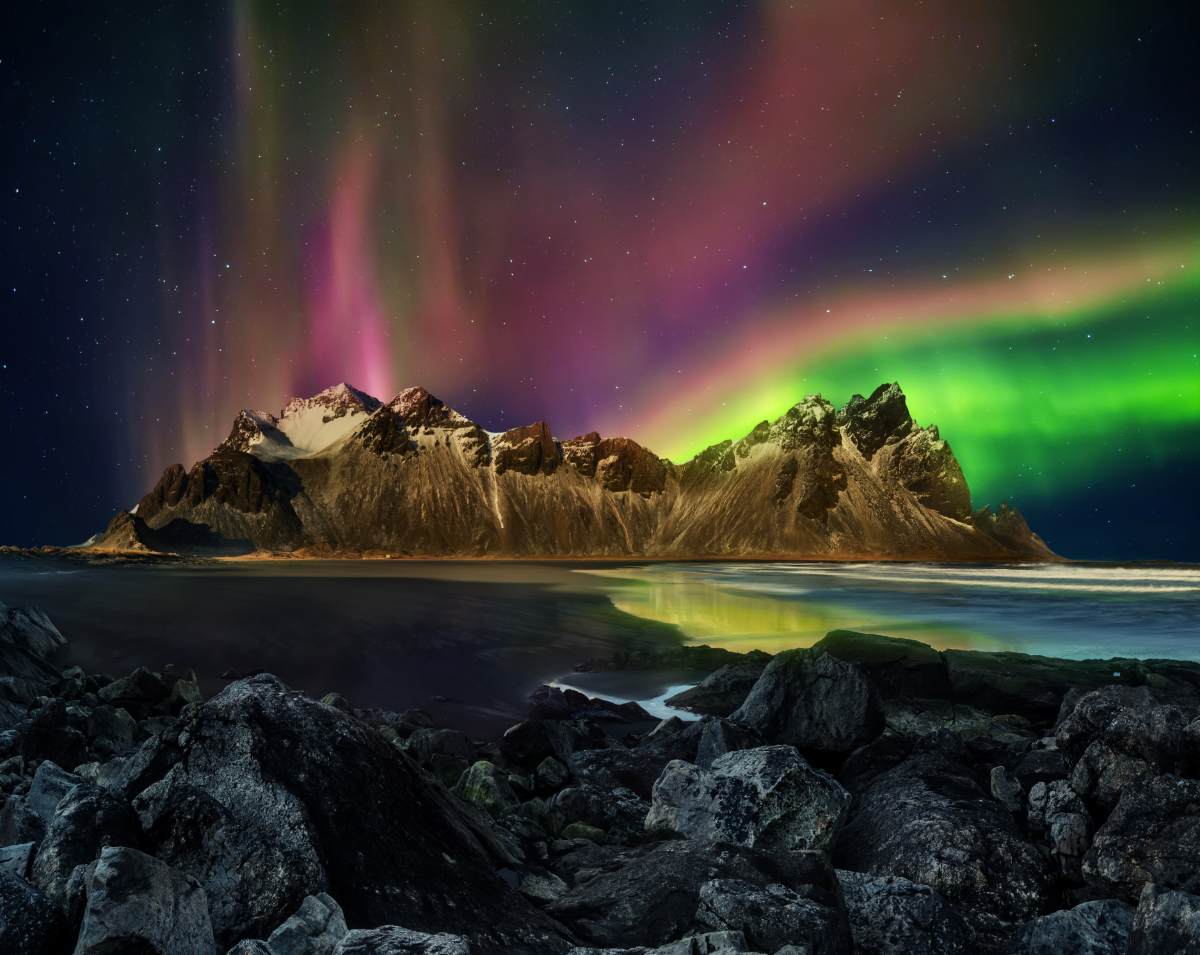
What Does That Say About the Northern Lights in Iceland?
The most southern point in Iceland is Surtsey, which lies at 63° latitude, meaning you can see the Iceland Northern Lights from all over the country.
To see the Aurora Lights in Iceland, you must be somewhere with as little light pollution as possible. Luckily, Iceland has plenty of these pockets all around the nation, and the further north you go, the less light pollution you will likely have. That means you are very unlikely to spot the Northern Lights close to any city or town, making a trip to the Icelandic rural areas a must. Luckily, we have a guide for the best spots for a stargazing tour in Iceland, which will also be true for catching the Iceland Auroras.
If you’re not afraid of the elements, this could be an excellent opportunity to try camping in Iceland. There are so many beautiful spots to visit if you’re not afraid to explore Icelandic nature, and in the colder half of the year, you won’t be fighting other visitors for a good spot.
When Should You Catch the Iceland Northern Lights?
You have probably heard of the Midnight Sun in Iceland that is present in the summertime. In the wintertime, there isn’t much sun to speak about, and that is the perfect time of year to catch some of the Iceland Northern Lights. Winter in Iceland is no picnic, but with the right gear and preparation, you’ll have the best of times!
You will have to wait for a clear night without any clouds to really get the full experience, which isn’t always easy on this island that attracts clouds like a picnic attracts ants. Have a look at the national Icelandic Aurora forecast and pick the right day to head out.
The Best Time of Year to Spot the Northern Lights (Monthwise)
Technically, the Northern Lights can be seen throughout the year, but since they are…well… lights, you’ll need darkness to see them clearly. That’s why hunting the Northern Lights during the months of May, June, July, and the majority of August is almost a mission of futility because of all our increasing daylight hours that ultimately climax into the Midnight Sun in June (which means no real darkness whatsoever).
As mentioned, the best time to see the Northern Lights is during wintertime (December to March). This season has the most darkness, with a mere 4-5 hours of daylight each day mid-winter. However, if you wait until between 21:00 and 02:00 to go Northern Lights hunting, you might just see them as early as September and as late as mid-April.
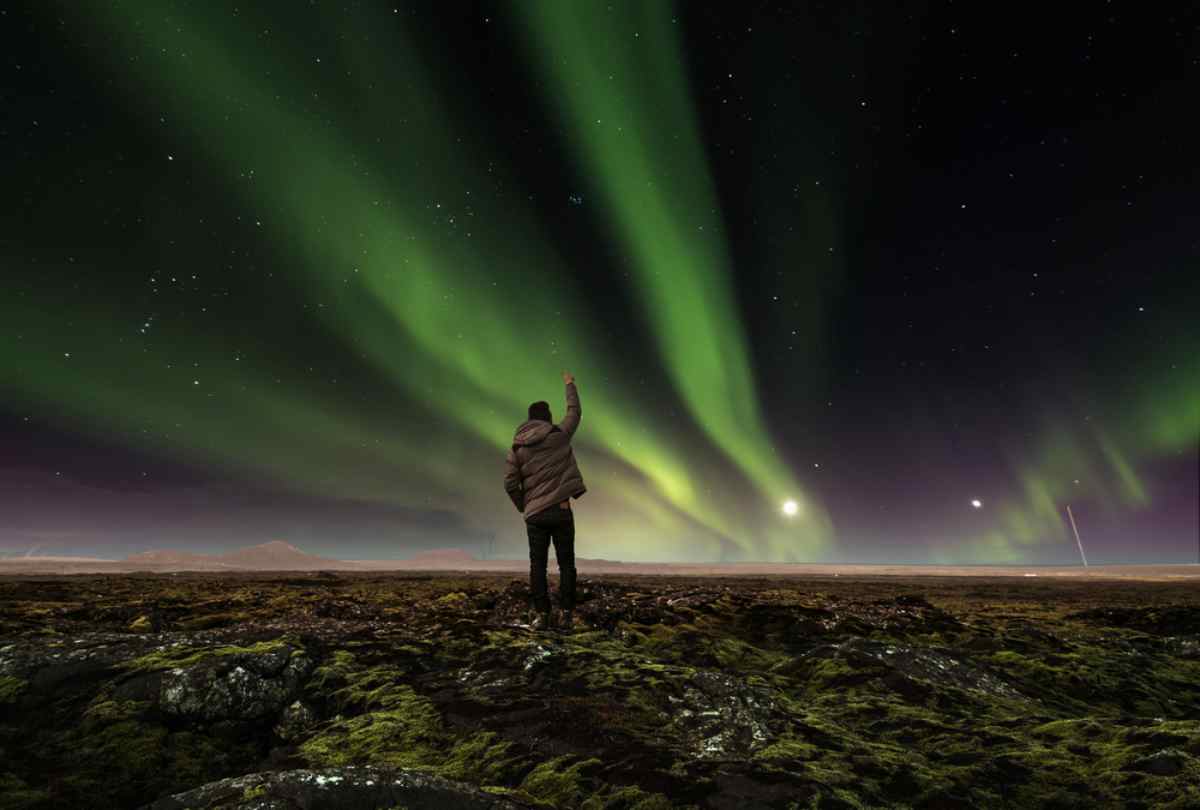
How to Capture the Iceland Northern Lights
Have you ever seen the moon on a clear night and tried to take a picture of it with your phone? It often ends up looking like you’re photographing a small lamp in a dark room. With this mini-guide to a good Iceland Northern Lights picture, you’ll be able to stun the people back home:
- First things first: a quality camera is the only way to go. You need to be able to fidget a little bit with settings and have the right wide lens and camera stand to catch the Aurora Lights in Iceland properly.
- Secondly, balance the ISO and aperture to get the right level of detail. An ISO setting that is too high will only highlight the grainy bits and bobs on the picture, and an unbalanced aperture won’t show any details.
- Thirdly, shutter speed is key to getting the right amount of light in your picture. The camera needs proper time to take in the lights in order to create a picture with visible elements. Aurora Borealis is never still, so make sure you balance ISO and shutter speed to get the results you want.
If you don’t have a quality camera, some camera-focused phones might have the internal gear to get some proper photos, but that is more an exception than a rule.
A Few Helpful Tips for Going Northern Lights Hunting
If this is your first time going Northern Lights hunting, the following tips and advice can be helpful:
Get Out of the City.
Remember how we said that seeing the lights will require darkness? Well, waiting till mid-winter only to be blinded by the city lights is not the solution. Get out of the cities and towns and go to more remote places where the darkness can truly envelop you. You can either rent your own transport or book a spot on a tour to do so.
Dress for the Occasion.
You’re guaranteed that it’s going to be cold. Not just because you might’ve planned your trip for the wintertime but because the Northern Lights only appear under certain conditions, which include extreme cold. So, be sure to wear warm clothes, everything from thermal underwear and warm socks to warm jackets, hats, and gloves.
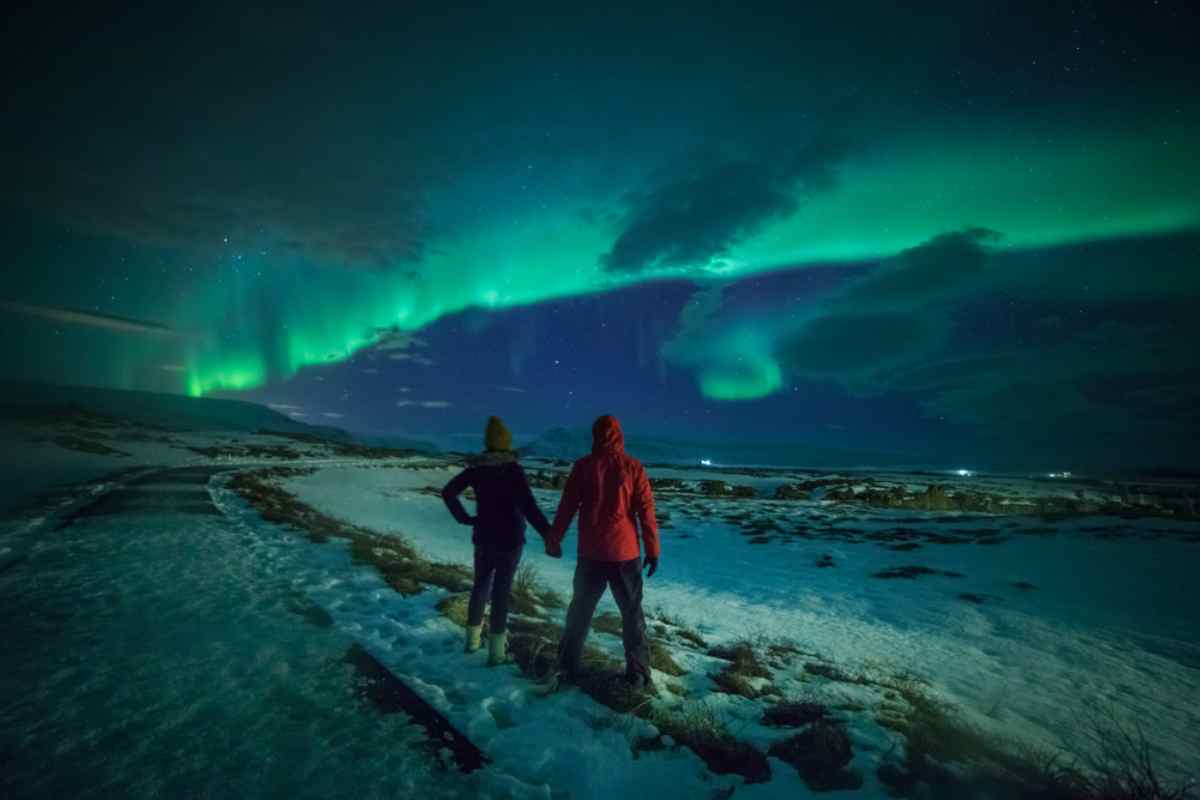
Only Park in Designated Areas.
Getting out of the city doesn’t mean you can just park somewhere next to the road. Not only can this be extremely damaging to our local fauna and flora, but it’s illegal in Iceland, and you will get fined heavily if caught. Find a designated parking lot, or opt to park your campervan at one of the more remote camping grounds.
Keep an Eye on the Weather.
It’s important to keep an eye on the Iceland weather forecast. The Northern Lights won’t be visible if it’s cloudy, and you also don’t want to end up in blizzards or winds of up to 35+ kilometers an hour (all things that are prevalent during our winter months).
Keep an Eye on the Road Conditions.
Not only can road conditions become extremely challenging with snow and ice during the colder months of the year, but you can also face sudden road closures that can completely derail an itinerary or divert a planned route.
Know Where to Look.
This is one of the reasons why many prefer going on a Northern Lights tour. If you don’t know where the Northern Lights hot spots are, you can end up searching an entire night with no results. If you’re still planning to head out by yourself, check out a few favorite spots like Dyrholaey Cliffs and Vik Church, or ask the locals for guidance.
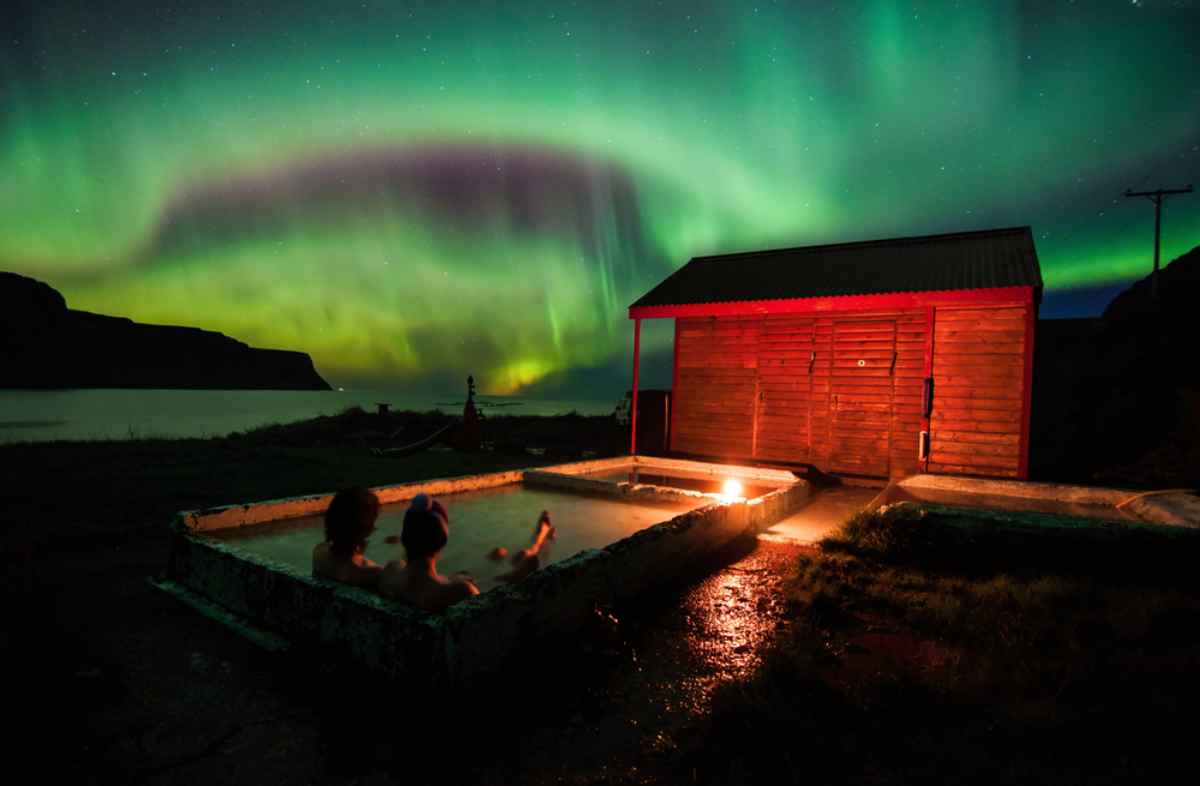
A Few Practical Things to Remember When Looking for the Northern Lights
Keep the following in mind when looking for the Northern Lights:
- Remember that you need to allow your eyes to adjust to the darkness once you're out of range of the city lights and car lights and have turned off any other source of light. To help this process go quicker, you can close your eyes for a bit and then reopen them to discover the wonderful world of “night vision.”
- Be patient. This is not a scheduled show or a fixed appointment. Even if you go Northern Lights hunting during prime conditions, you may still need to wait a bit before they show themselves.
- While you wait, keep an eye on the real-time Northern Lights forecast. This will immediately give you a heads-up on whether you’ll be spotting them soon or whether you might need to adjust your position slightly.
Environmental Considerations When Hunting the Northern Lights
Just like you need to keep to designated parking spots, you must stick to marked trails. Don’t start wandering off in the excitement of your search. Not only can this be incredibly dangerous to visitors who don’t know the surroundings, but we Icelanders greatly respect our environment. We have sensitive ecosystems that include a type of moss that, when trampled, can take up to 10 years to recover, if at all.
A Few Alternative Activities
If you’re out of luck and don’t get to experience the Northern Lights due to the weather, the following activities can make good substitutes if you’re close to the capital city:
- Check out the Reykjavík Lava Show.
- Visit Perlan.
- “See” the Northern Lights at Aurora Reykjavik.
- Take a relaxing soak at Sky Lagoon.
- Enjoy the nightlife; we’ve got bars, eateries with delicious local cuisine, and nightclubs that go till early morning (this one’s for when your Northern Light plans fall through between 21:00 and 02:00).
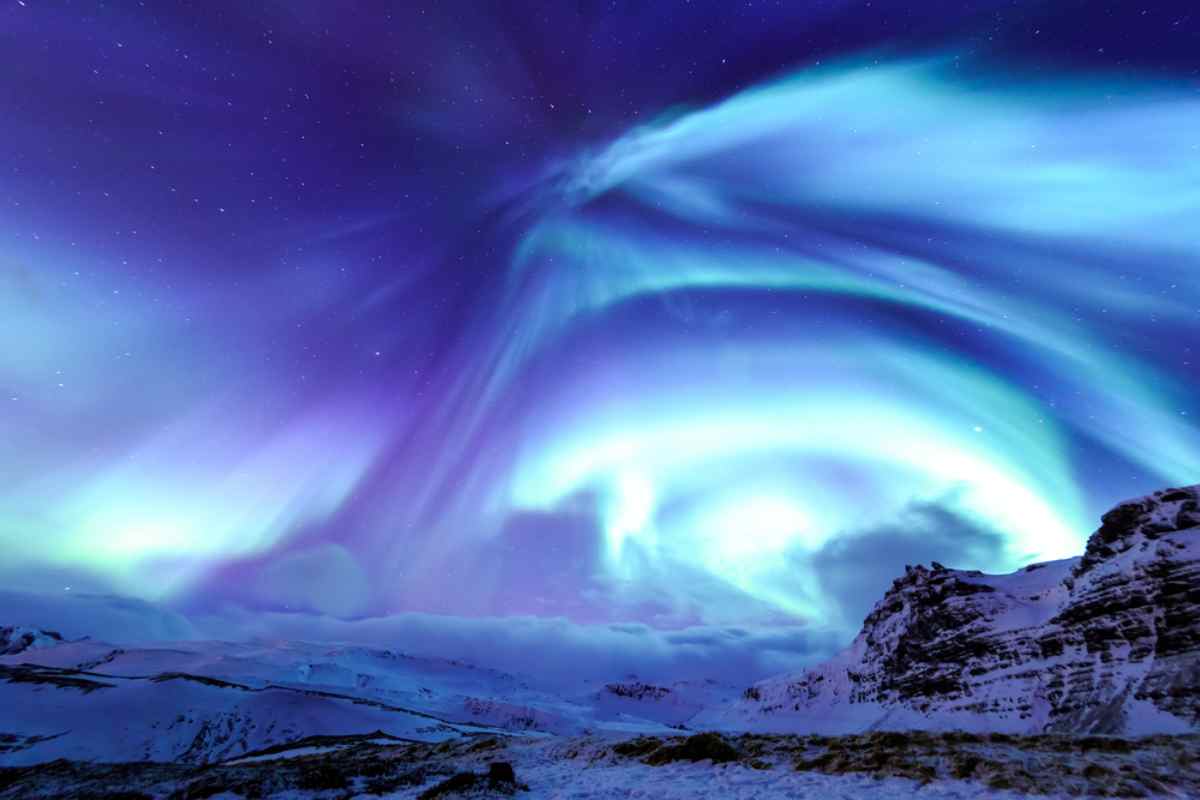
Watching the Iceland Northern Lights in Style
If you have put proper thought and care into your enlightening (pun intended) holiday, you should ensure you’ve chosen the right way to experience this phenomenon. The real Aurora Borealis in Iceland should best be viewed in a remote location where you can enjoy the moment undisturbed.
Camping in Iceland is always an excellent way to spend your holiday, so if this is the preferred holiday stay, you should read about how to camp in Iceland like a pro before you set up the tent.
If you’d rather stay under a solid roof and in a heated bedroom, this list of the top 10 Iceland farms to visit or stay at will be your best friend. This allows you to not bother with all the camping gear, but it also gets you out in the rural areas of Iceland, where you will get a clear view of the Iceland Northern Lights.
If you want even more convenience and instead stay in the hustle and bustle of the cities and towns, getting on an Iceland Northern Lights tour might be your cup of tea. There are plenty of options when it comes to guided tours of this cosmic marvel, but don’t get upset if you don’t see it. The Iceland Northern Lights answer to no one and are never guaranteed.
Our recommended way to view the northern lights is to rent a campervan in Iceland and chase the otherworldly phenomenon on your own terms!
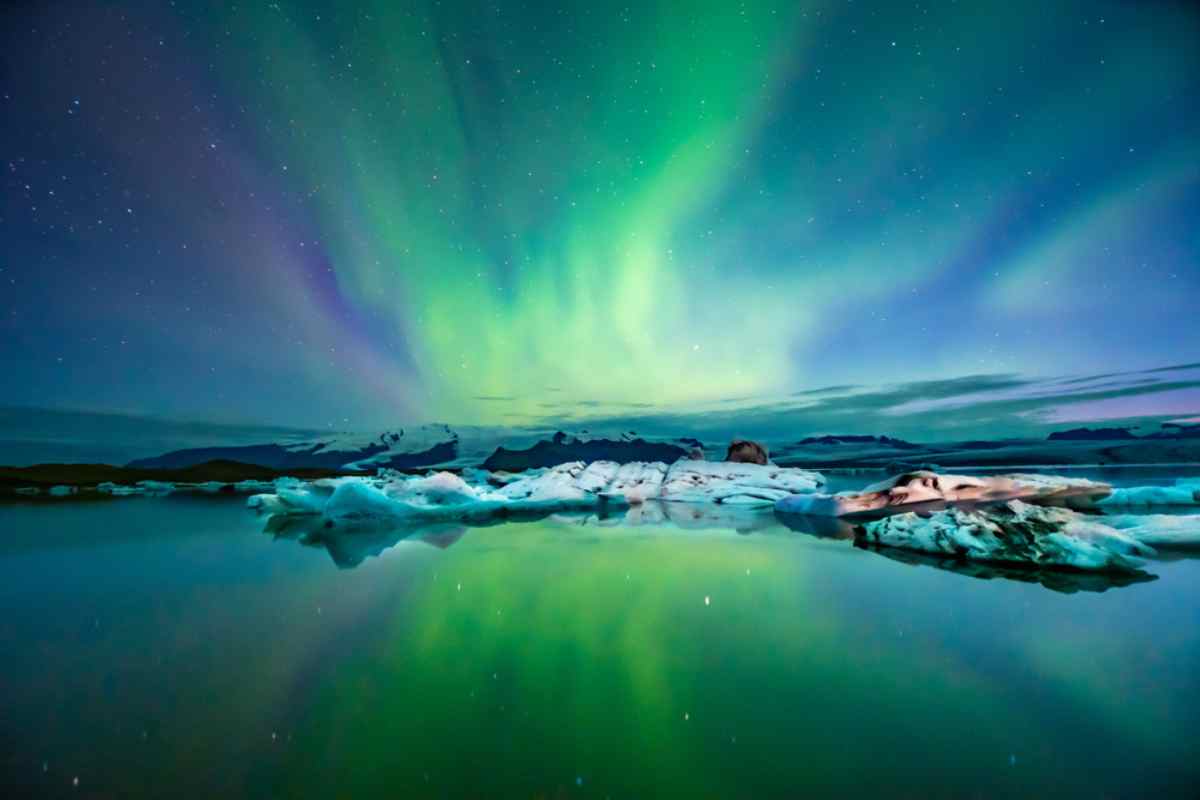
FAQs
Below, you will find a few answers to some frequently asked questions:
What Colors are the Northern Lights?
Although many photos will depict the Northern Lights as various brightly colored neon lights dancing across the night sky, the truth is that this is a rare occasion. They mostly display as light green with added streaks of pink sometimes. Seeing red is extremely rare and the blue variations cannot be seen.
Are the Northern Lights Harmful?
The Northern Lights produce electrically charged particles. But, unlike lightning, for example, these are not harmful to humans. We would, however, advise that you take precautions with your electronic devices since they have been proven to interfere with tech and electronic infrastructure.
Does the Northern Lights Make Noise?
While the Northern Lights aren't generally a noisy natural phenomenon, scientists have found a type of crackling, hissing, or whistling coming from about 5% of all Northern Lights.


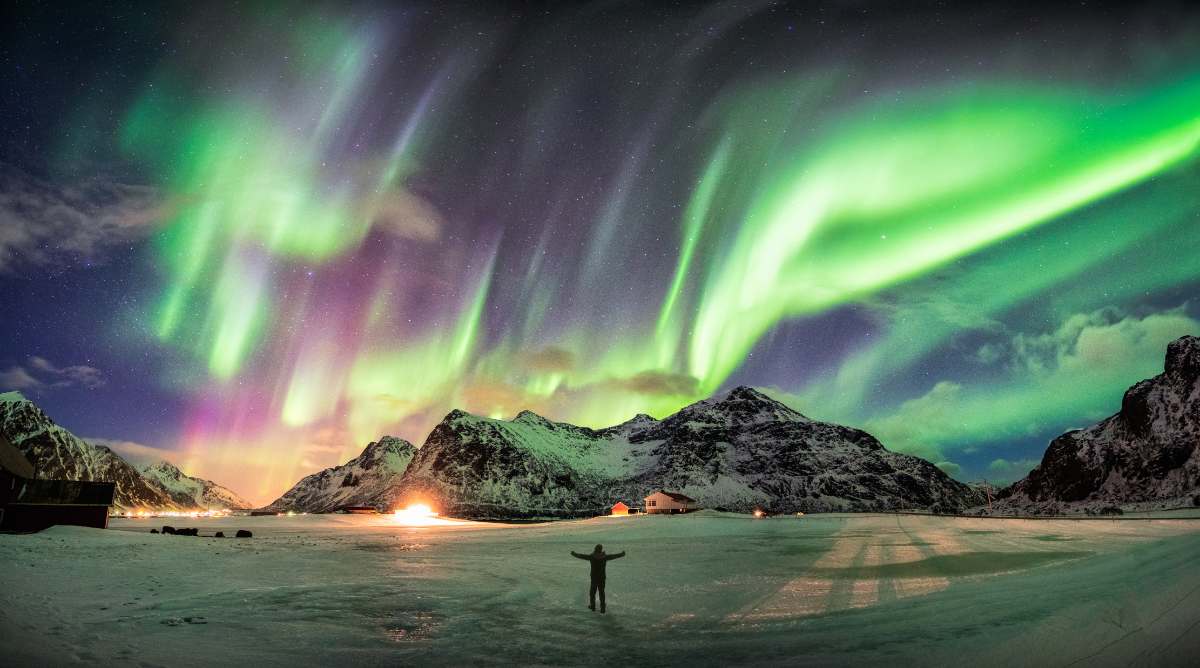
 By
By 
